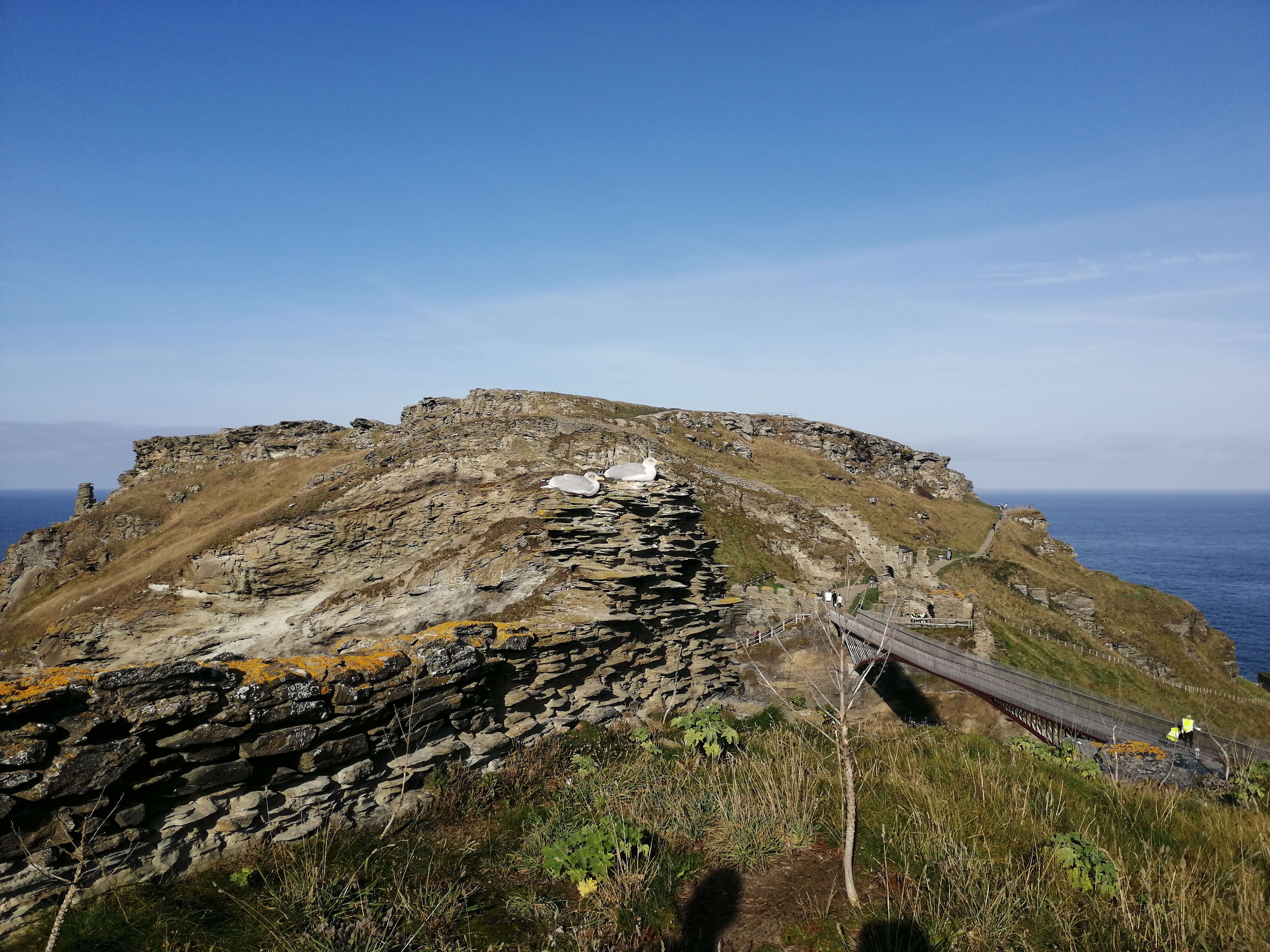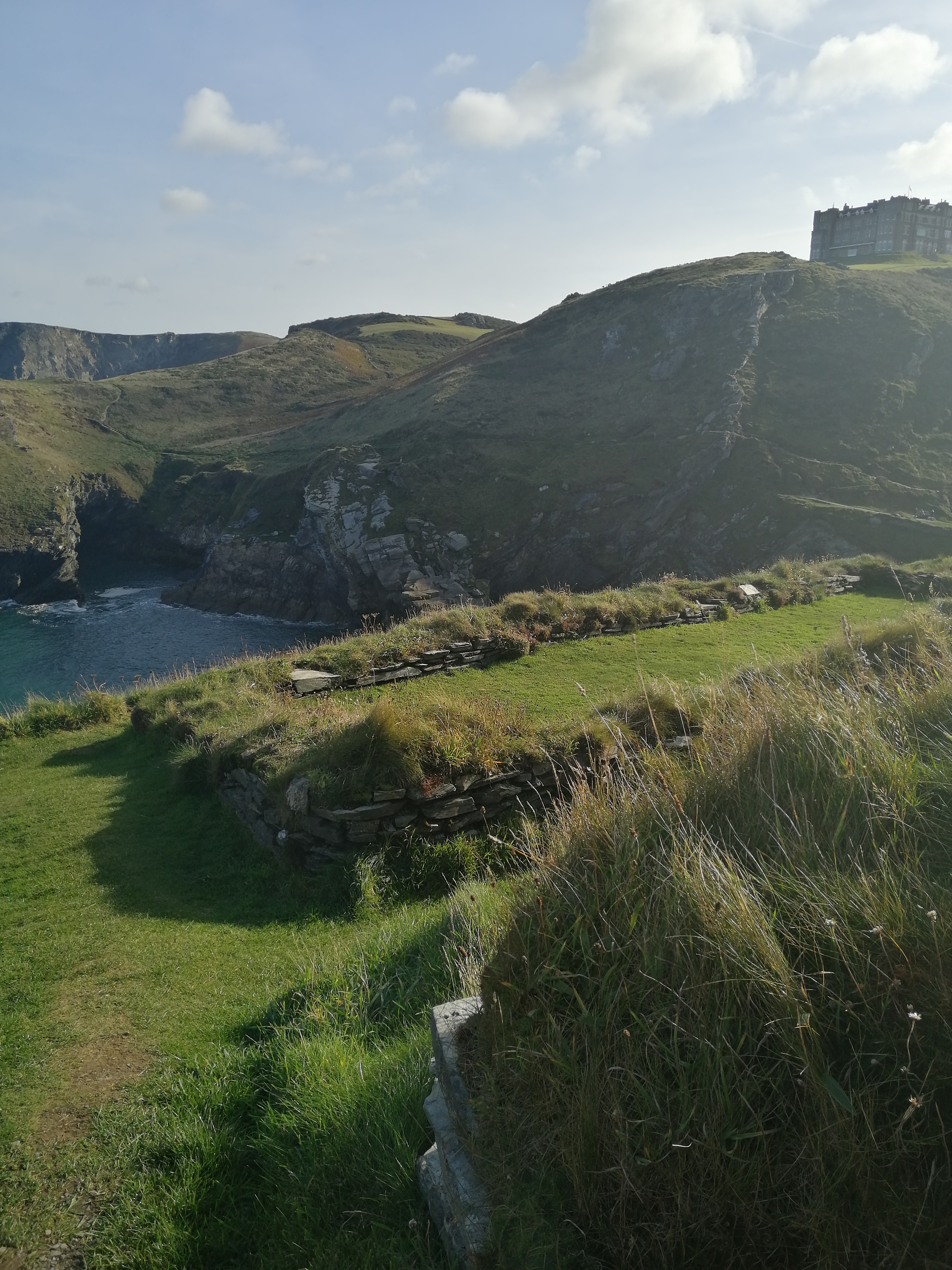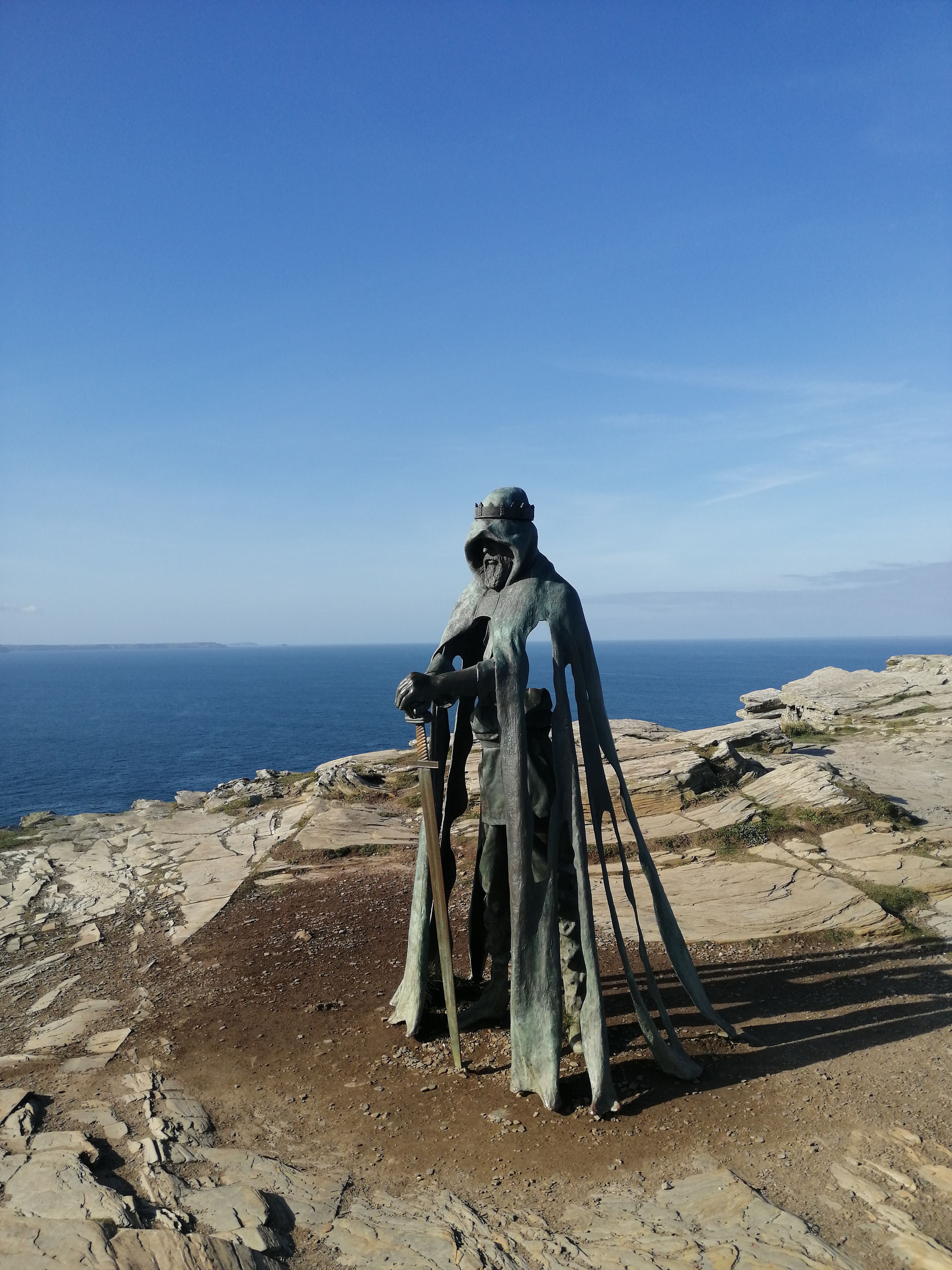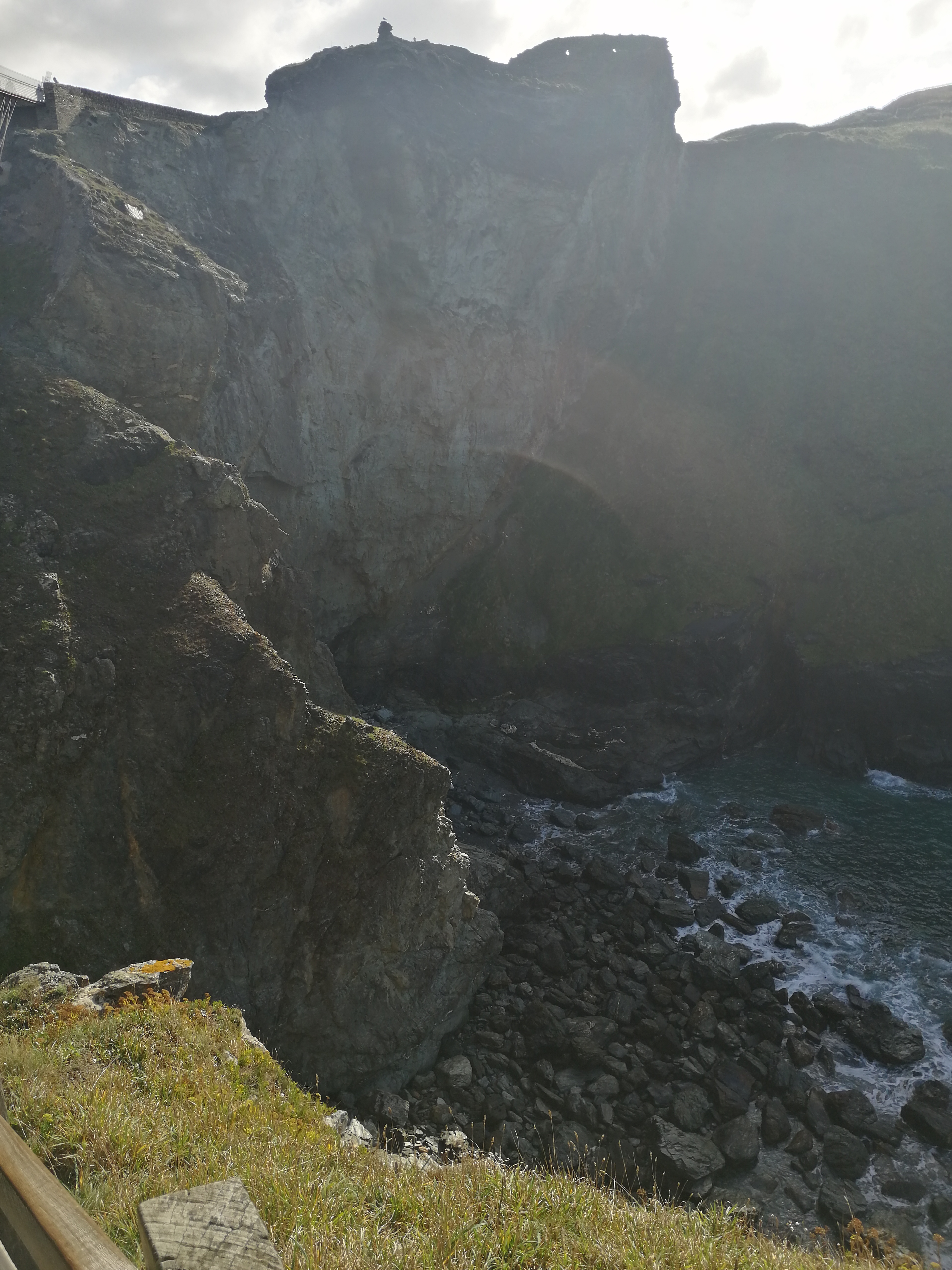The stories of Arthur, Excalibar, Merlin and the other assorted hangers-on have been re-imagined many times throughout history. It’s a tale of chivalry, forbidden love, magic, tragedy, pretty much everything you need for a timeless story. Cornwall, an area of the UK steeped in folklore, plays an important part in the myth of King Arthur. And nowhere embodies that more than Tintagel Castle.

Wild and windswept
The original settlement stretched from the mainland, linked via a thin neck of rock. This made it easier to defend. Along with access to the sea and a source of fresh water, people started living here as far back as AD450. Tide and time eroded this physical link. The last time I visited, the only way across was down a long set bunch of stairs, across a small walkway, and up another long set of stairs. Now, there’s a rather lovely cantilevered bridge, paved with Cornish Delabole slate tiles to make the journey much simpler.

The legend of King Arthur
So where does King Arthur come in? After the mid-7th century it seems no-one bothered to do much on the island for over 500 years. Geoffrey of Monmouth wrote “History of the Kings of Britain” around 1138. According to him, King Arthur was conceived at Tintageal. It’s certainly got a dramatic aspect that would make it an attractive setting for a writer.


Tintagel appears in poems of Tristan and Iseult as the court of Tristan’s uncle, King Mark of Cornwall.
The connection to Arthur drew the Earl of Cornwall, Richard, brother of Henry III, to buy the island and castle that was presumably built by and for the earl himself. However it doesn’t seem he used the castle much, using it as more of a literary status symbol.
On a beautiful blue-sky day, the site is glorious and inspiring. But I’d imagine it would be so in any weather, brooding under a dark sky, thrilling in a storm, and peaceful under a blanket of snow.



You’ll find all sorts to spark your interest as you make your way around the island. Grass covers the foundations of dozens of buildings around the site.

You can follow Tristan and Iseult’s story in stone around the former walled garden.


There’s also this impressive bronze statue named “Gallos” (meaning power in Cornish) inspired by the legend of King Arthur.

Underneath the castle lies “Merlin’s cave”. This is a 330 foot long cave where the titular wizard lived. It goes all the way under the island so you can walk right through (when the tide is out of course).

It’s definitely worth a visit, and its free if you’re with English Heritage, albeit a mite pricey if your not. What do you think? Please share in the comments.


2 Pingbacks